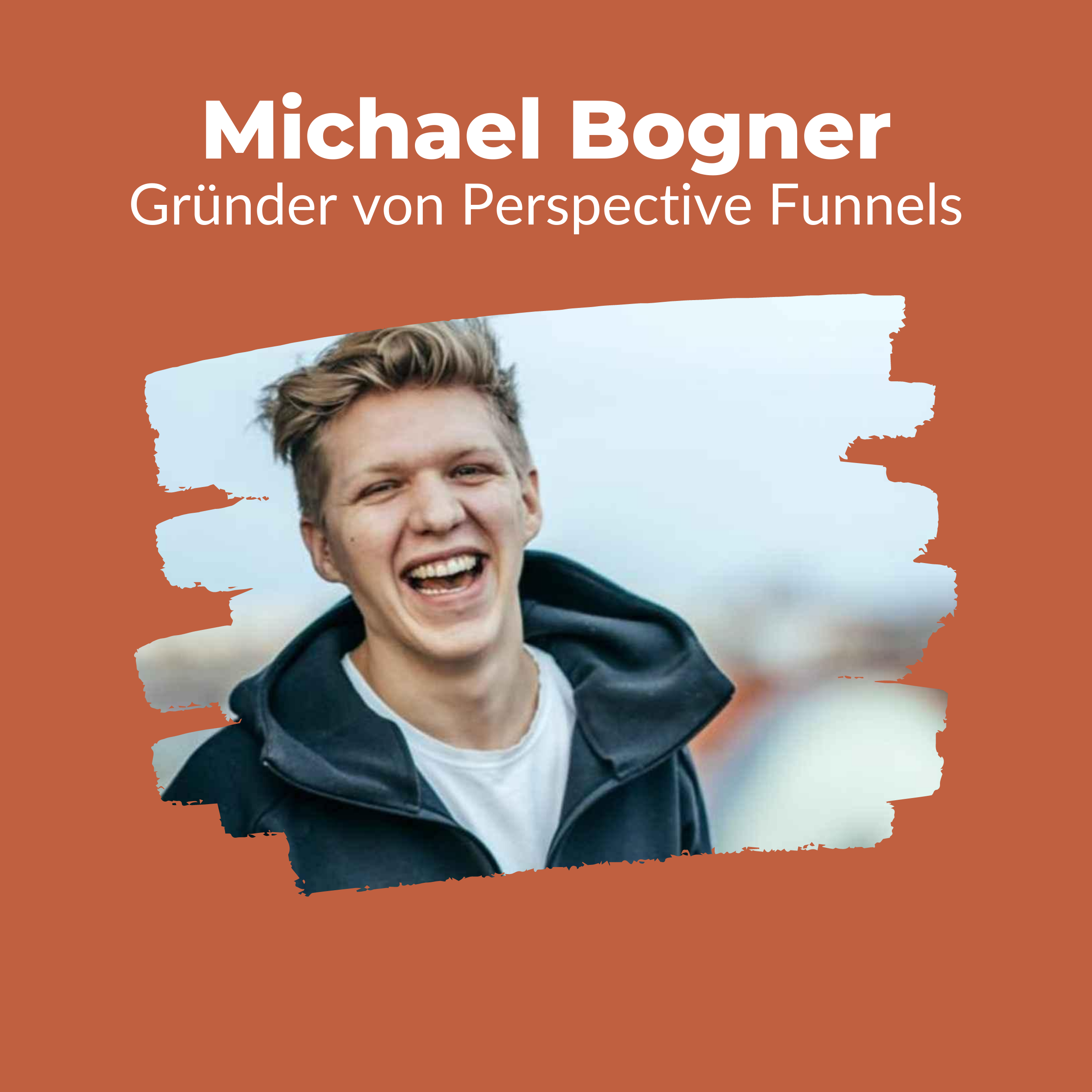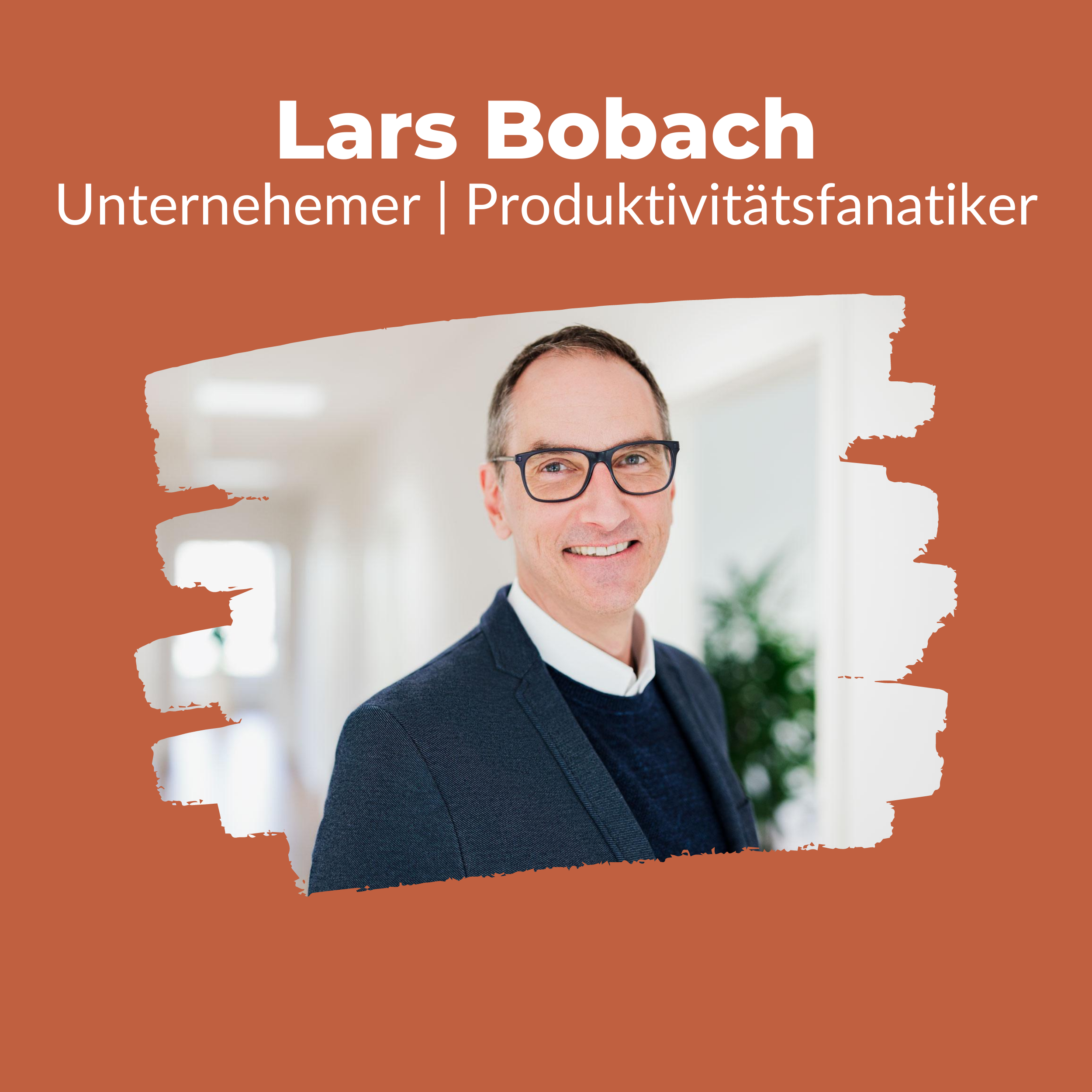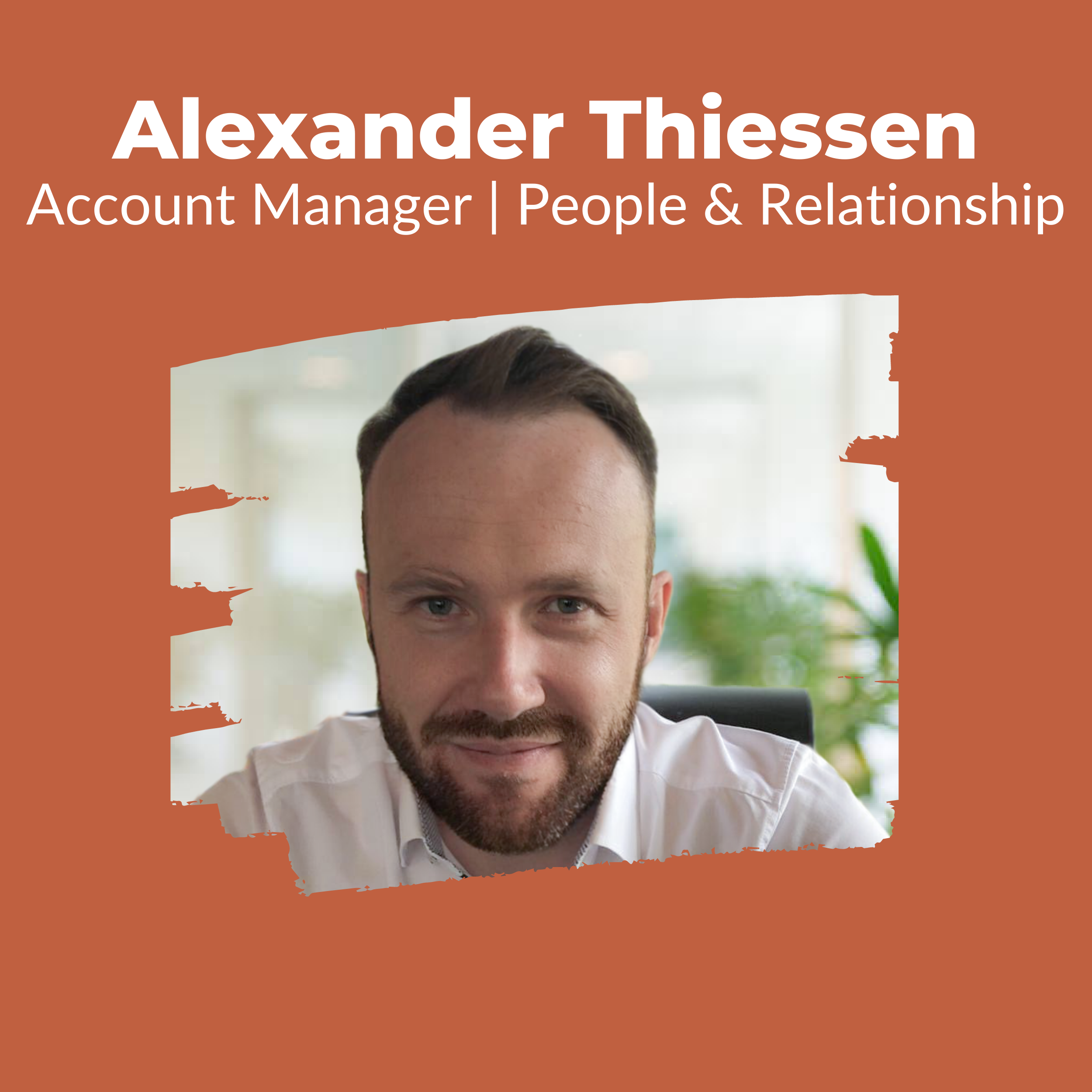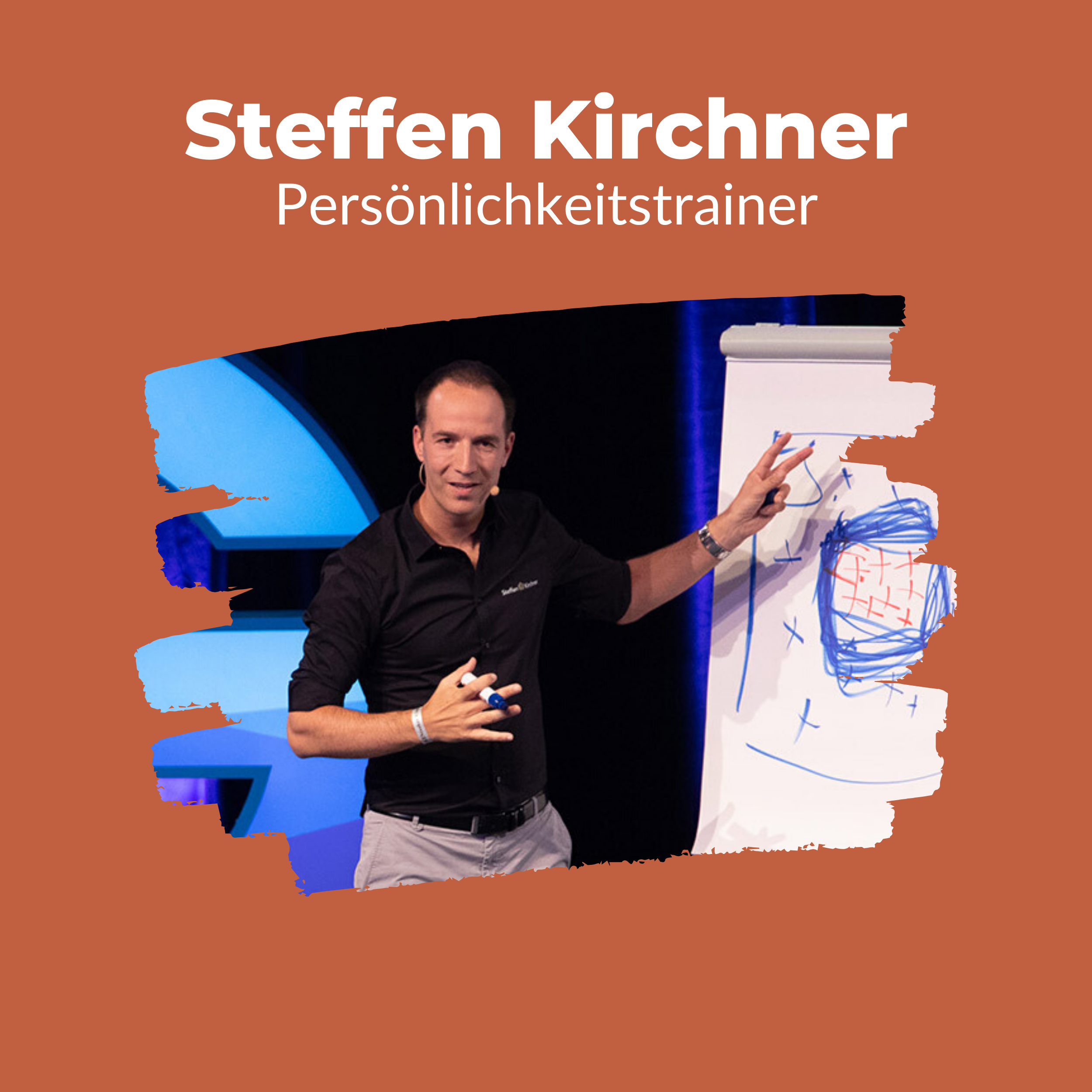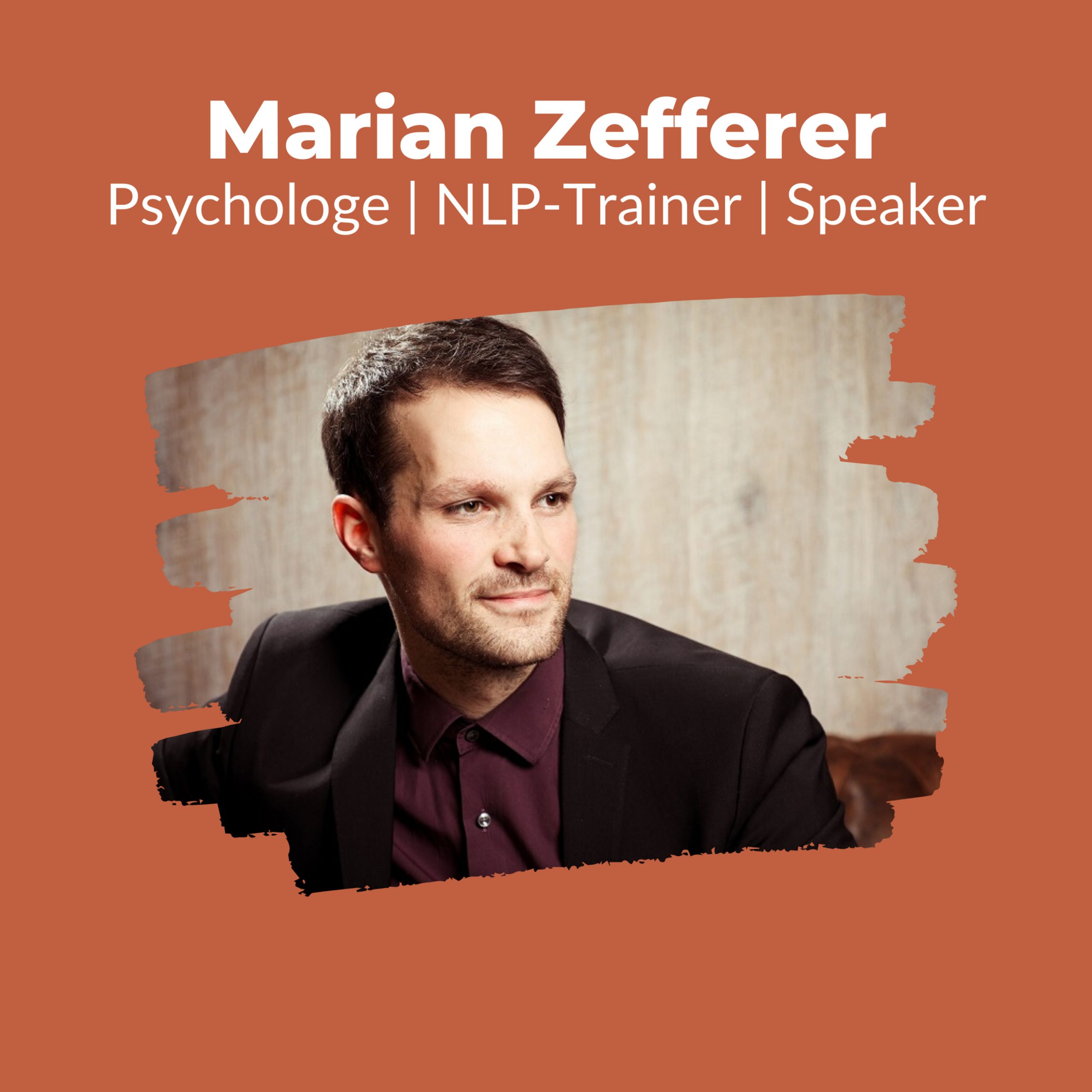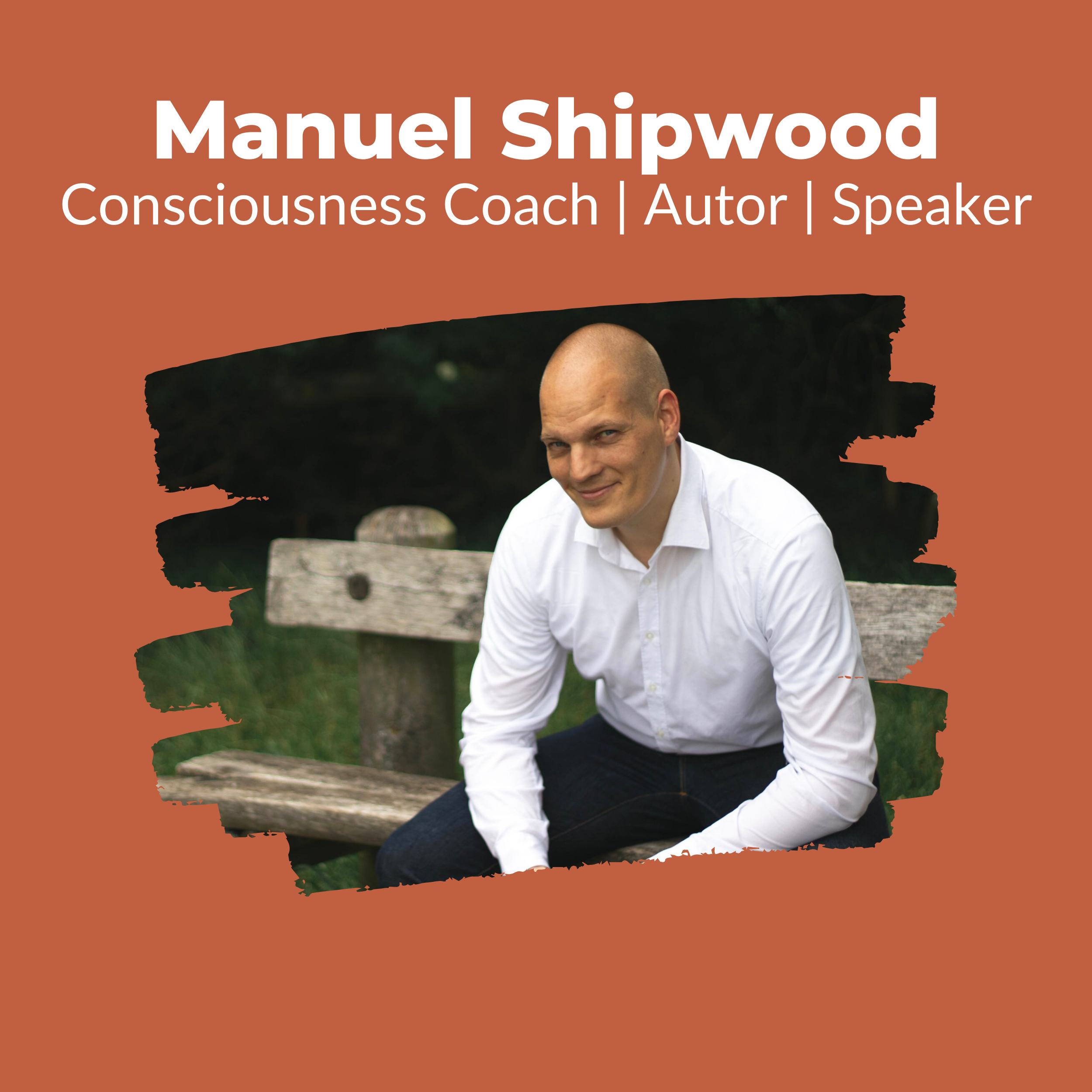Klicken Sie auf den unteren Button, um den Inhalt von open.spotify.com zu laden.
Inhalt laden
Heute spreche ich mit Brendan Kane, darüber, wie er es geschafft hat in 30 Tagen Eine Millionen Follower aufzubauen, wie gut man diese Follower monetarisieren kann und wie du es schaffst Content zu erstellen, der Viral geht und Millionen von Menschen erreicht.
Außerdem gibt er ein paar Einblicke in Zahlen und Strategien, eine absolute must-listen Folge, für jeden der Englisch kann.
Are Growth Strategist and Author your title for the podcast cover?
Link zu GAST
Brendan’s Website: https://brendanjkane.com/
Get the book: book.onemillionfollowers.com
Kostenloses Erstgespräch: https://wolfbraun.com
Instagram: https://wolfbraun.com/ig
Timestamps:
0:00 Preview
0:20 Intro
1:02 Introduction
1:38 Verification on Instagram
2:53 How to Grow 1 Million Followers fast
4:41 Why did you focus Instagram after FB ?
5:44 Strategy behind growing a Following
6:25 Monetization and Growth
8:10 Creating Viral Content
10:48 engineering Virality and KPIs to measure Success
14:02 Reiterate the right way
16:02 GaryVee’s Approach
17:19 Measuring ROI on Brand Building
19:31 Direct Response vs Brand Building
20:46 The one thing people do wrong all the time
22:10 Brendan’s Niche Choice
23:08 Brendan’s Next Goals
23:55 Follower CPA + his Ad spent
27:35 Long Term Goal
28:14 Thoughts about Tiktok
29:32 Wrapping things up
30:11 Outro
Automatic Transcript:
Today I have Brendon Kane with me. He is the author of the book, 1 million followers, how I built a massive social following in 30 days. And he’s also a growth strategist and a keynote speaker, his work with stars such as Taylor Swift entry, Rihanna. And this is one of the reasons, I’m thrilled to have you here today, welcome to the show.
1:19
Yeah, thanks for having me. I appreciate it.
1:22
Yeah, glad this worked out. I’m actually really surprised that you even responded to me on LinkedIn. And that’s the first learning right here. You’ve got nothing to lose, just try it out. And then opportunities like this one arise. And, yeah, I have one question that I certainly want to start off with how the hell are you not verified in Instagram yet? I mean, you’re verified on Facebook already?
1:43
Yeah, there’s a we haven’t put a tremendous amount of effort into that. But I think that there’s a few variables that come into play one. There was a point in time where a lot of people were getting verified and they were getting verified by, you know, contacting people internally and paying under the So they cracked down on the number of accounts that they verified. And then I have some people, I have some close friends that work within Facebook and Instagram. And one of the things that they hypothesizes because I have a book about social media and social media growth, they don’t particularly like that. But eventually it’ll get verified. It’s not like to me, it’s, it doesn’t really matter. It’s like, it doesn’t help you that it doesn’t help you in the algorithms or running ads or anything like that. But it is kind of strange. You get verified and Facebook and then Instagram is a really different thing, but it’ll happen eventually. You know, I have friends that like know, the head of Instagram and things of that nature, but I’ve just been so focused on other things right now. But eventually it’ll happen.
2:45
Yeah, I mean, it’s social proof and always helps a bit and you have a lot of PR, so I assumed, yeah, verification is a given. Yeah, um, so the book title is how to build a massive social following 30 days. How do you grow so many followers in in such a short period of time.
3:02
Yeah, the it comes down to a few things. The first thing, the first and most important thing is content is like, sure we can generate followers fast. And you need good content to do that. But content becomes even more critically important once you have the followers because there’s this misconception that the more followers you get, the more reach and engagement you get. Now, did that happen four or five years ago? Yes. But with the amount of number of people on the platform today, the algorithms really have to prioritize what content they’re going to see to people. Because when you open up Instagram, YouTube, Facebook, tik tok, whatever it is, there’s probably 1000 pieces of content it could see to you based upon the people following your interactions. So I stress that in the book and just when working with people in general, is it’s not just about followers is having a strong content strategy. And when it comes to follower growth specifically, we do a lot of testing around content that gets people to opt in To follow an account, and we almost kind of view it as an advertisement for your account. And there’s different growth principles on different platforms, where you know, Facebook, you can see content out to a specific audience. And it’s a highly shareable platform. So your content can go viral and get people to opt in that way. Versus Instagram, we use a completely different strategy where we syndicate our content out onto other channels to then drive it back to our channel to follow. So at a very high level, the way that we generate followers at scale is ceding the right content to the right people that advertises why they should follow this account. Hmm.
4:43
When Have you decided that you wanted to go on Insert all in on Instagram and grow a following there? I mean, you have already proven that you can do this on Facebook. When was the turning point for you?
4:53
I think it was right after I released the book. There was just a lot of people because we were running advertisements for the book, too. Facebook, Instagram, and then people were looking at my Instagram account. And it’s like, well, I didn’t have a million followers on Instagram, so they were getting confused. So that’s really all in on Instagram. And, you know, I love to just kind of learn and experiment. So it really fueled me down that path. And you know, now we’re really focused heavily on YouTube. So that’s the next kind of experiment that that we’re going to be running in and really diving deep into the growth mechanisms of that. And I will say also, there’s kind of misconceptions in the marketplace about me and why I did it. I’m very much an experiential learner. It’s not about making myself into an influencer. It’s not about making my son famous. It’s learning what are the growth principles? How does it work, so that I can help other people do it and share that information?
5:44
Was it very strategic, like did you plan the funnel the whole strategy before actually reaching the followers or was it more of a process that you took all the action steps afterwards?
5:55
Facebook was very planned out because I had spent three and a half years working with like big celebrities, media organizations, to understand the growth principles before doing it with myself with Instagram, I had the goal, but I didn’t have the strategy in I was looking at myself from day one not using learning with my other clients. So it was a little bit different is kind of like Facebook, it was all planned out ahead of time, Instagram, I kind of figured it out as I went along.
6:25
Okay, would you say it’s beneficial to grow the following with the intent and strategy of monetizing it? Or would you say, just focus on actually growing the following?
6:34
Well, it’s critically important to have a return on investment strategy. And there’s different return on investment strategies that you can have, you know, obviously, everybody knows the influencer game, and you generate followers and then you do brand deals. Can that work? Yes, it’s a very saturated market. But that is one way to monetize the way that I kind of look at followers in the way that my monetization works and I’ve had successes, I look at how you can leverage your own online audience for offline opportunities. So having that that online audience leads to podcasts, interviews, leads to speaking on stages, leads to big meetings, booked deals, on getting on television, all of that. And that’s where the monetization comes from me. So I don’t look at it from the standpoint of, Okay, I’m going to generate followers and I’m going to immediately monetize it through advertising or things of that nature. There’s nothing wrong with going in that direction. I just see there’s a greater opportunity, taking the approach that I have, because there’s far fewer people doing it. Also, I think that there’s also a misconception with e commerce companies, a lot of e commerce companies think that, hey, I’m going to just generate a bunch of followers and I’m just gonna immediately start selling them products. It doesn’t correlate that with can it work that way? Yes, but you have to nurture it over time. So when I’m advising ecommerce companies or companies that have to generate immediate revenue, I’m often advising them to focus on more direct response advertising. tactics, generate the generate the traffic generate the sales. And then once you have that profit rolling in, then you can go back and reinvest in followers.
8:09
Okay. I have personally grown 150,000 followers on Instagram as well, organically. So I know a thing or two about growing accounts. But two things, I have noticed that some niches are really, really easy, like puppies or pets work particularly well on Instagram and pet with the right hashtags and some viral content. They basically grow with itself. But the big question is, how do you find or create viral content?
8:35
It’s a great question. I mean, there’s multiple answers to that question. I mean, first off, recognizing that creating viral content, it’s a marathon, it’s not a sprint. It’s like you’re not gonna wake up overnight and start creating viral content. Now we have a few processes that we look at that allows us to my team has generated over 40 billion views online through content. So we have a tremendous amount of experience. And one of the first places to start is really become a student of the game is create strong references of people that are successful in your niche and actually break it down. Understand what are the nuanced details? What are the formats? What are the structures? How are they opening videos? Are they closing videos? How do they build retention, to have success? In addition, looking at the videos that are underperforming or the content that’s underperforming, because so many people just look at viral content or consume it from just from a pure entertainment value or just looking at it and seeing it successful. There’s very few people that actually sit there and understand. We’re trying to understand what is driving that success. And the more that you study, the more references that you have and learn and understand what drives success, then you can start applying it to your content, but people really get lost in that. I’m just going to create a video with my iPhone or I’m just going to put Have a photo without really understanding why they’re doing it or at least setting an initial hypothesis of why they think this is going to work. Because if you post something, it doesn’t work, that’s fine. But you have to learn something from it. Most people aren’t learning, they just keep doing the same thing over and over again. And there’s this misconception in the market, that you just post as much content as possible, and then it all magically happen. But that’s just not how it works. It’s an iterative process that you get better at like anything in life is you learn what works, you learn what doesn’t work, and you let that fuel your strategy going forward. And that’s why we’ve set up a private community specifically for this working with people and weekly content sprints to get them in the flow of creating content, learning from it, and iterating based off those learnings, I really like your idea of engineering virality you seem like a very analytical and data driven person.
10:54
So how do you measure success? What are some KPIs you use to detect During the success of a piece of content?
11:02
so it depends on the platform. So for like Facebook, for example, you know, some of the key metrics that we’re looking at is first the view to reach ratio. So as we know, like views aren’t counted until three seconds. So and the systems did that, or the algorithms did that, because advertisers are up in arms of counting of you at one second, which is not really a view. So what the algorithms are looking for is how many three second views happen with a correlate of reach. So typically, what we’re seeing from a ratio perspective is anything under a 30% ratio view to reach, it’s not going to perform. Once you get over like 40%, then that’s what’s triggering the algorithms to say, okay, people are actually stopping in the feed and watching this video. It’s a similar sort of effect with Instagram and LinkedIn. However, the data is not as granular as you get with Facebook, but also These platforms at the end of the day, especially when it comes to, to video they’re looking with for retention, because that’s how they make money is most people think, oh, people are these platforms are making money because they’re suppressing reach, and getting you to pay for it. It’s not the case, these platforms are looking for the best content. They keep people on the platform longer, because that’s how they make money. And if they see people just swiping up past your content and not stopping and engaging with it or watching with it, then they know listen, this content is not adding value to our community. People are skipping over it. So we’re going to prioritize other content. So if you can get people to stop in the feed and engage with it, that’s really where we see that success. So again, just to recap, view to reach ratio is one of the most important things and then going back to Facebook, we’re looking at the share to views and shares to reach ratio. And we’re looking at what that correlation is as well one that we looked at View to share ratio we’re looking for about 1%, about 1% or more, that’s where content can really start to take off YouTube’s a bit of a different animal YouTube is is is first and foremost looking at your click through percentage of your thumbnail and headline. So when a majority of the traffic doesn’t come from search, a majority of the traffic is coming from suggested videos. So when you’re watching a YouTube video, you’ll see a suggested videos on the right hand side. YouTube is measuring what your the effectiveness of your click through percentage is on that thumbnail and headline. And then the secondary metric which is just as important is going back to that retention conversation. How long are people staying and watching that video? And if both of those match up for what it’s looking for this you’ll get tremendous scale out of it, because YouTube will just ceding that content to more and more people because they see it’s retaining people they see it’s engaging people which is having a positive of impact in their community.
14:03
How would you recommend people to split test to reiterate, is it’s only using ads only using post posting as much as possible. And then archiving non performing posts, what would you recommend?
14:15
So there’s different strategies for different platforms. So Facebook, on Facebook and Instagram, you can use dark post and you can use the ad platform. And I would say it’s more of an advanced tool to use for testing. But the level of data and granularity that you can get from it is extremely powerful. Now, do you have to go that route to be successful? No. You can do it purely organically, and just create a spreadsheet or use a data tracking software just to again learn the biggest thing is learning is you post something, you make a hypothesis. Why do I think this is going to work? tie it back to a reference? It’s like, okay, I just watched a video from Jay Shetty or Prince EA. And I think that this element is what’s driving Their performance. So I’m now going to apply that, that little strategy to my next piece of content and see what the correlate of result is. And again, if it doesn’t work, that’s fine. Make an assessment Why? Why didn’t that work? What was it about my execution? That didn’t work? The same thing? If it did work? Okay, what about it? Do I think did work? And then you apply that to the next piece of content? No, I will say I do not believe in this frequency game like is like post as much as possible. It’s quality over quantity. Now, if if you have a lot to test and you’re learning from it, by all means, go for it. But I’d rather see somebody take the time to do the research, do the analysis, make a strong assessment, take the time with the content and post once a week versus posting every day and not learning anything? Sure. Can you lock upon it? Yes, but most people a they put too much pressure on themselves. And then they’re just creating for the sake of creating and stead of creating for the sake of learning
16:03
are interesting because Gary Vee, for example, preaches, put out content, put out content, put out content as much as you can spread on all platforms. So I like that you emphasize the quality over the quantity.
16:14
Yeah. And I understand where Gary’s coming from. And, you know, I respect you know, what he’s been able to achieve. Gary just lives in a very different world. Now, Gary started off creating his own content. But when he started off creating his own content, he wasn’t creating multiple pieces of content every day. Now, today, he’s got a team of 30 Plus, working on his, you know, brand. And so, and I know that his, his team is learning and processing all this information. So can Gary strategy work? Yes, but I don’t believe that it’s the right fit for most people. Now, I will say and this is the approach that I take with my book and everybody I work with, there is not one way to be successful. These are just the ways that I have found to be successful. So I will never tell anybody. This is The only way you know because you’ve got to find what works for you. what’s comfortable for you for your brand, what’s comfortable for the content that you want to create. So I just want to make sure that I’m Clear. Clear, I’m saying is like, test different strategies, find the one that feels good to you, and then run with that. You know,
17:19
how do I know that I actually get a positive return on investment? I mean, Gary Vee has a huge team working for him, creating content at scale, and manpower is obviously expensive as well. Then there’s the method you did focusing on ads and quality, rather than quantity, which saves you a lot of time. And yeah, people need it. How do I know which one is better for me? How can I measure
17:43
ROI on building brand?
17:46
Well, the approach that Gary takes from an ROI perspective is very similar to the approach that I take is, is you’re leveraging your online presence for offline opportunities. So Gary has an agency any attract clients that, you know, he gets paid significant fees for speaking and book deals and things of that nature. So it’s a very loose ROI that you kind of have to look at the larger picture. It’s very different than as you know, with direct response advertising. When you’re running a Facebook ad to an offer, it’s like, you know, there’s, you know, correlate row as you can see with, with the adspend. So, you know, if you’re going to direct response route, it’s very easy to see the ROI because it’s shown purely in numbers. If you’re going after a larger vision and a larger play, then you’ve got to measure loosely like what, what are the other opportunities that are coming to the table and map those out ahead of time? It’d be like, Okay, if I’m going to invest that X number of dollars into my brand each month, what do I want the current quarterly return on investment to be and that correlate of return on investment doesn’t necessarily have to be financial, it could be a book deal. It could be a record deal or something along those lines, but mapping that self out for yourself, of what I expect that return on investment to be in what that return on investment looks like, and use that as your benchmark and going forward, it’s a little bit more difficult. But it can pay dividends if you’re if you’re going after a larger brand play. Now with me personally, I do both at this point, I do both the ROI from a, a larger vision perspective, and we do you know, more direct response advertising to kind of fuel the overall growth.
19:30
What businesses or personal brands would you recommend to heavily invest into building a following building brands versus the direct response approach?
19:39
Depends on your business.
19:41
Again, it’s it really depends on what you’re looking to achieve. The biggest thing is it has to be sustainable for you.
19:47
So
19:48
you know, there’s certain clients that I have that have plenty of money to invest. And they’re looking at the long term play. So they’re less worried about how do I make $1 tomorrow, versus how do I make $1 You know, six months, a year or a few years down the line, versus there’s other people that are in that boat that they need to make $1 tomorrow, like they need to go directly. And if that’s you, then direct response advertising is going to be your direct path in putting you into a sustainable place. And sustainability is the biggest thing because often people get into like follower growth or engagement and they haven’t mapped out the return on investment strategy. And then they burn through too much cash in like a few months or they burn themselves out, because they’re not seeing the money that they need in the bank today. So it’s just really understanding and being honest with yourself of what your financial situation is, how much you’re willing to invest and how quickly you need that investment to pay off.
20:47
What would you say is the one thing people do wrong all the time, either by choosing the wrong strategy, focusing on the wrong thing? What is the big thing?
20:57
I think the biggest mistake is not having the right mindset because In is understanding why you’re doing what you’re doing, understanding where your return on investment is going. Because people just think that, hey, I’m going to generate a bunch of followers and all of a sudden, everything magically is going to fall into place, people are going to start reaching out and just cutting checks. It’s not that that world anymore because it’s a very saturated market. Even though there’s tons of people that have millions of followers online, some of them make a ton of money, some of them make no money. So it’s really understanding like what’s driving you Why do you want followers? What does that mean for your life for your business? How does that play into generating revenue and all those things? Because that solid foundation is what’s going to fuel you through the hard times. Because this is hard. You know, this is this is a marathon. It’s not a sprint. And I see so many people burning themselves out and giving up and, you know, to be transparent, there’s pretty much every week I have a period of time where I feel like I’m going to give up, but that’s because I have that solid foundation. I remember myself and I center myself of why I’m doing it. What is the long term play? And that gets me through the difficult times and keeps me going and moving forward.
22:11
Why have you decided to focus on thought leadership teaching and inspirational posts on Instagram? For your brand for your niche? Was this very targeted early on? Why did you choose on this niche? Basically?
22:23
Well thought leadership is really my passion. I love teaching. I love inspiring people. I will say that we do a lot of testing with content. Again, I’m using this as an experiment for myself so that I can teach other people or working on a brand new content strategy right now that we’re mapping out that’s going to be YouTube, heavily focused, and that’s going to go definitely the thought leadership and tying into more marketing in my second book in different ways that we can really help people stand out above the noise and overcome competition and things of that nature. So, again, you know, thought leadership and inspiring people? Is it my true passion? And we’re just finding and testing different ways to express that and learning the impact of that.
23:08
You mentioned YouTube a couple times, what is the next big thing you’re looking to reach is getting a million subscribers on YouTube? Or what is the next big step?
23:16
Yeah, it’s less
23:18
YouTube is less focused on how many subscribers we get is like we’re launching a new agency around my second book. And that’s kind of really how we’re going to be leveraging YouTube is to see content into the market to launch the book and launch the agency. So that’s more of the core focus that we’re doing with YouTube is less focused on you know, how do we generate X number of subscribers or views? Yes, that plays into our strategy in our mind, but it’s not the core focus of it. Again, we’re looking at the return on investment that’s going to come from that and that’s really what’s dictating our content strategy with that.
23:55
Speech speaking offer tough investments. Can you disclose roughly how much ad budget Do you have spent on your personal brand for IG or for Facebook?
24:05
Um, it’s tough to say because we spend a lot on follower we spent money on follower growth in those experiments. And then we spent a lot of money in direct response advertising to sell books.you know, when we talk about follower growth on the cost of generate followers, I will say that it’s different from niche to niche, as you can imagine, with targeting and all that stuff. I mean, with Facebook, you know, depending on your targeting, you can get followers as you know, as low as a penny or less than a penny based on kind of geolocation and investing. But then some targeting can real followers for 10 cents or 20 cents on Instagram, you know, we’ve generated followers as low as like two and a half cents. And sometimes it comes in at 10 to 11 cents. So it really depends on that. But I will say that, especially in the direct response side, I mean, we’ve invested in Hundreds of thousands of dollars close to close over a million dollars in, you know, promoting books and selling. But that’s very ROI based and an attribution based model. So for anybody that’s looking to consider generating followers, I’m sure there’s purely organic ways that you can go and you know, there’s other people that can speak to that. And if you’re going from a advertising perspective, whether you’re advertising other accounts or through the ad platform, that’s where the return on investment comes in, is really mapping out. Now what is a follower worth to you? And a lot of people in their industries, they don’t need a million followers. Some people only need 30,000 or 50,000 or 100,000, to stand out in their market and to really maximize the value of of a social audience.
25:45
Yeah, it’s also very hard, especially depending on the audience. I mean, in Germany, it’s much harder to grow big audience. Obviously, it’s limited by language. I run ads for my German clients to grow her audience, for your follower audience and the average CPA and niches around 20 cents. And I was like this is really high compared to the numbers you’d get in international forest. This due to the fact that a niche is very small. And yeah, only German speaking photos, so obviously have to pay much more to reach those people.
26:14
But I guess you got a good number,
26:17
it goes back to your return on investment because it’s like, the cost per follower is really irrelevant. When it comes down to like, like, let’s just say that you pay 20 cents for a follower, but that follower then is worth $1 to you later down the road, then you’ll pay 20 cents all day long versus you can get up for a penny. And if it doesn’t correlate to any return on investment down the road, then it doesn’t matter. So that’s the biggest thing is like the cost really has to match up to how you’re going to maximize that. And people get so caught up in like how much I spent or you spent on followers when it’s very different for each business and each each nation how you’re going to maximize the value of it because like me, like I’ve made millions of dollars off of the followers I generated because I knew how I was maximizing the potential of it for offline opportunities. So, and that’s the biggest thing is, if I told you I spent $10,000 to generate a million followers, but my return on investment was 5000 versus I spent 100,000, my return on investment was a million. Which one would you take? I mean, you make the the 100,000 off of million. And that’s where I just like to give perspective because people get so caught up in the numbers instead of what the numbers actually mean. When
27:36
Lessing basic, basically, I’m looking forward to the future. What would you say is your mission? Do you have a long term goal? You said you like teaching? Do you have anything planned out mapped down for the future?
27:47
Yeah, so the the big focus is, is really helping people’s voice be heard. I feel like there’s people all across the world that have the power to have an impact, but they just don’t want to get their message out there. And that’s kind of my ethos with that First Book in the second book and really help people understand how to differentiate, differentiate themselves into markets, both online and offline, to have the success and reach their goals in the shortest time period possible.
28:13
Okay, last question. What do you think of Tick Tock?
28:17
It’s interesting. I mean,
28:19
they’ve undeniably amassed a huge audience. It’s captured the attention. It’s over a billion users. I’m just gonna be you know, in one of the things I really like about Tick Tock is their algorithms are very favorable to content, you could have 10 followers and generate a million views on a video. What is going to be interesting in the future of it is what do they do with it? How do they evolve the platform? You know, how do they attract advertisers? How do they evolve their advertising platform? But how did they diversify themselves out of just the current format because we’ve seen this story play out multiple times. You know, you look at Snapchat what happened with Snapchat it it captured that that younger demographic and they didn’t diversify, they didn’t you know, really play to the to the influencers, they didn’t really build a solid solid advertising platform. And thus it correlative Lee just destroyed the platform over a period of time because Facebook and Instagram just said, Okay, we’re just going to keep testing until we figure out how to reproduce the same type of engagement that that Snapchat has and I think that tik tok has some very smart people working for them. But it’ll be just interesting to see how that plays out and how it evolves as a as a platform and as a content format.
29:33
Alright, thank you so much for the time I know you’re on a tight schedule. So I hope it was very insightful for you do listen, I hope you have got some great ideas and notes something from this value packed interview. So where’s the best place to contact you or learn more about you?
29:48
So they want to get the book. They can get it on Amazon or they can go to book dot 1 million followers calm. They can learn more about me and my website Brendan J. Kane calm Or just direct messaged me on Instagram at Brendan Kane.
30:04
Alright, that’s
30:06
that’s it for today and thank you so much for taking the time and see you next episode bye bye.

